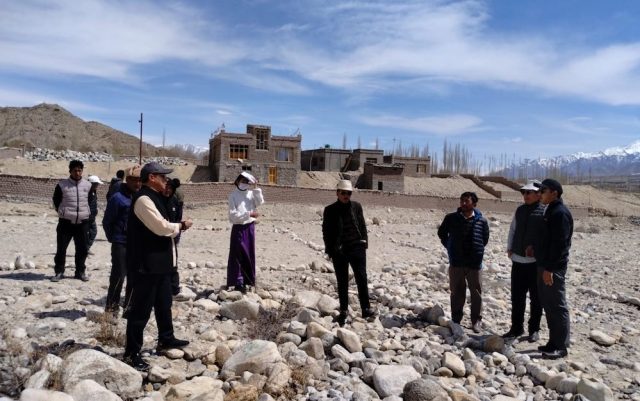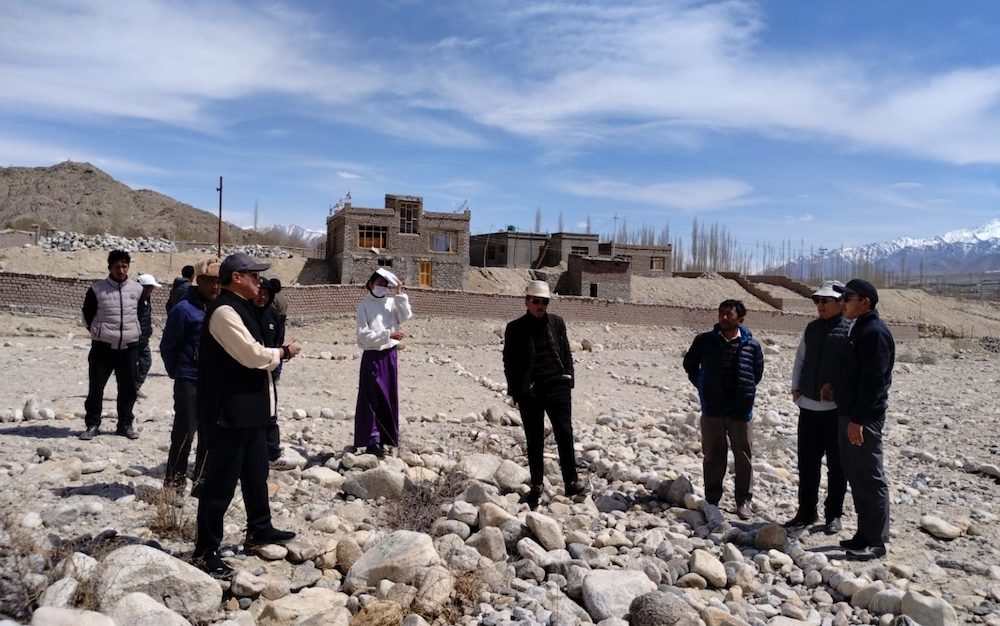By Tsering Dhundup
53 Tibetan nomadic families in Ladakh will be handed over their new homes by the end of September under the Central Tibetan Administration’s “Building Back Compact Communities” (BBCC) project, also known as “Shipoe Leyshi” in Tibetan. On May 1st, work began to construct houses in Agling Tibetan settlement in Leh for Tibetan nomads from two villages in Ladakh, namely Makhul and Chushul, situated in the remote regions of Changtang bordering Tibet.
The Ladakh Changthang settlement, comprising nine clusters spread across the Changthang plains, occupies an area of 25,000 sq.m. It stands as one of the least developed Tibetan settlements in India, characterized by its challenging living conditions. These clusters include Hanley, Chumur, Sumdho, Nyoma, Samedh, Puga, Kharnak, Makhul, and Chushul situated near the Indo-Tibetan border.
Speaking to Phayul, Tenzin Norbu, the additional secretary of the Department of Home, CTA, shared insights after visiting the Jangthang nomadic regions from April 11 to 19, 2024. He disclosed that the Ladakh Autonomous Hill Development Council allocated a land parcel of 31 Kanal and 15 marla (approximately 1,72,878 square feet) in 2020 for construction of houses for the people of Makhul and Chushul. However, despite this allocation, the villagers have awaited housing for four years.
In April 2023, officials from the Department of Home, CTA, surveyed to assess the population and financial status of the targeted regions. The department devised a financing scheme based on the financial capacities of households, offering full or partial financing for housing construction. Accordingly, out of the 53 households identified as beneficiaries, 27 will have their homes fully financed by the department. Meanwhile, 2 households will receive 75% financing, 10 households 50% financing, and 3 households 25% financing. Additionally, 11 households expressed the ability to fund their homes independently and only require land allocation.
The financing limit per household member ranges from 6 to 10 lakhs rupees, depending on family size, Larger households with more than nine family members are eligible for up to 10 lakhs in financing. Families with four to eight members can receive 8 lakh rupees, while those with one to three members qualify for 6 lakhs. The project’s overall budget is approximately 2 crore 50 lakh Indian rupees.
The Jangthang Tibetan settlement was established in 1982, accommodating nomadic groups primarily composed of traditional herders. These settlers face significant challenges, especially during harsh winter months when temperatures drop below freezing. The absence of electricity further complicates their already arduous living conditions, making daily life a constant struggle for these refugees. Marred by climate change and livelihood challenges, many of the settlers of the remote border region has since begun to migrate towards more densely populated regions of Leh, the capital of the Ladakh Union Territory over the years.













